ENFORCER SK-1123-SDQ User manual
- Category
- Numeric keypads
- Type
- User manual
This manual is also suitable for

Vandal Resistant Outdoor
Access Control Keypads
Manual
(SK-1123-SPQ shown)
Model
Number
2 Outputs
Backlit
Keys
Proximity
Reader
SK-1123-SDQ
SK-1123-SPQ

Installation
screws
(+)
(+)
(-)
(-)
12~24V
Egress button
(inside the house)
More Egress buttons
can be connected in parallel
AC/DC N.C.
N.C.
COM
OR
N.O.
N.O.
N.O.
N.O.
OUTPUT 1
N.C. COM N.O.
OUTPUT 2
Electric
Lock
CATHODE
OUTPUT RELAY
N.O. Output for Fail-secure Lock
N.C. Output for Fail-safe Lock
1N4004
EG
IN
(+) (-)
1 2 3 4 5 6 7 8 9
12-24VDC
Power Supply
2
ENFORCER Vandal Resistant Access Control Keypads
SECO-LARM U.S.A., Inc.
Quick Installation Guide:
Mounting Diagram:
Quick Wiring Diagram:
This page is for installers looking to do a basic installation and programming of the keypad. For
more in-depth installation and programming instructions, see the Table of Contents on page 4.
SK-1123-SDQ / SK-1123-SPQ

3
ENFORCER Vandal Resistant Access Control Keypads
SECO-LARM U.S.A., Inc.
Quick Programming Guide:
This page is for installers looking to do a basic installation and programming of the keypad.
For more in-depth installation and programming instructions, see the Table of Contents on page 4.
Programming Tips:
• The master, super user, common user, visitor, duress, and user codes cannot
be the same.
• A ashing amber LED indicates the keypad is in standby mode. A solid amber LED indicates the
keypad is in programming mode.
• If the keypad is set for Auto Code Entry Mode, your user codes will need to be the same
number of digits as the master code (see page 24).
Programming Instructions:
Follow the instructions below if the following covers your needs:
• A new master code.
• A single 4-digit user code for all users, and no proximity cards.*
• One output to unlock a door.
• A 3-second delay time in opening the door after the output is activated.
1. Turn off the beeping before the 1-minute power-up period ends:
12 #
2. Enter Programming Mode:
0000 **
NOTE:
0000
is the default master code
3. Change the master code:
01 xxxx #
NOTE: xxxx
is the new master code.
4. Set the user code to operate output #1 (unlock the door):
10 2 000 xxxx #
NOTE:
000
chooses user ID #1 of 1,000 possible users (000~999).
XXXX
is the new user code for user ID #1.
5. Set the output #1 delay time (skip this step if the default value of 5 seconds is
acceptable):
51 3 #
NOTE:
3
sets the output #1 delay time for 3 seconds.
6. Exit programming mode:
**
*SK-1123-SPQ only

4
ENFORCER Vandal Resistant Access Control Keypads
SECO-LARM U.S.A., Inc.
Table of Contents:
Quick Installation Guide ..................................................................................................................... 2
Mounting Diagram ............................................................................................................................. 2
Quick Wiring Diagram ........................................................................................................................ 2
Quick Programming Guide ................................................................................................................ 3
Table of Contents ............................................................................................................................... 4
Features ............................................................................................................................................ 5
Specications .................................................................................................................................... 5
Overview ............................................................................................................................................ 6
Parts List ............................................................................................................................................ 6
LED Indicators and Keypad Sounds .................................................................................................. 6
Installation ......................................................................................................................................... 7
IMPORTANT NOTES ........................................................................................................................ 7
Wiring Diagram .................................................................................................................................. 8
Sample Applications .................................................................................................................... 9~10
Getting Ready to Program ..........................................................................................................10~11
Programming Format and Default Programming Values ................................................................. 12
System Restore ............................................................................................................................... 13
Programming the Master Code ....................................................................................................... 13
Programming the Super User Code .......................................................................................... 14~15
Programming Common User Codes ......................................................................................... 15~16
Programming User Codes and Proximity Cards ........................................................................ 16~17
Programming Visitor Codes for Output #1 ....................................................................................... 18
Programming Duress Codes ..................................................................................................... 19~20
Programming the Output Mode and Output Timing ......................................................................... 21
Programming the Real-Time Clock ................................................................................................. 22
Programming the Output #1 Auto-Disable Time ........................................................................ 22~23
Programming the Wrong-Code System Lock-Up ............................................................................ 24
Programming the User Code Entry Mode ................................................................................. 24~25
Programming the Keypad Sounds ................................................................................................... 25
Programming the Output Relay Activation Sounds ......................................................................... 25
Programming the Center LED Flashing during Standby Mode ....................................................... 26
Programming the Door-Forced-Open Warning and Timing ............................................................. 26
Programming the Door-Propped-Open Warning and Delay Time ................................................... 27
Programming the Egress Delay/Warning .................................................................................. 28~29
Direct Access to Programming (DAP) ............................................................................................. 29
Notes ............................................................................................................................................... 30
User’s Guide to Operating the SK-1123-SDQ/SK-1123-SPQ .......................................................... 31
Also Available .................................................................................................................................. 32

*SK-1123-SPQ only
5
ENFORCER Vandal Resistant Access Control Keypads
SECO-LARM U.S.A., Inc.
Features:
Specications:
Operating voltage 12~24 VAC/VDC
Current draw
(at 12VDC)
Standby 66mA
Keypress 93mA
Output 1 active 99mA
Output 1 & 2 active 126mA
Total max current draw 160mA
Outputs
#1 – Form C 1A@30VDC
#2 – Form C 1A@30VDC
Key active 100mA@24VDC
Duress 100mA@24VDC
Interlock 100mA@24VDC
Tamper 50mA@24VDC
Inputs
Egress N.O. Ground
Door sensor N.C. Ground
Door inhibit N.O. Ground
Proximity reader frequency* 125kHz (EM125)
Proximity reader sensing distance*
1½” (38mm)
Operating temperature -4°~158° F (-20°~70° C)
Operating humidity 5~95% Non-condensing
IP Rating IP66
Housing material Die-cast aluminum, powder paint coating
Dimensions (including back box)
4⁄”x3⁄”x2⁄” (125x79x52 mm)
Weight 1-lb 2-oz (520g)
• Built-in proximity card reader*
• 12~24 VAC/VDC Auto-adjusting operation
• Up to 1,000 possible user codes (000~999)
and/or proximity cards* programmable for
output #1, 100 (001~100) for output #2
• Up to 50 (01~50) possible temporary visitor
codes, which can be programmed for one-
time or limited-time use (1~99 hours)
• Output #1: Form C relay, 1A@30VDC max.
• Output #2: Form C relay, 1A@30VDC max.
• Outputs #1, #2 can be programmed to
activate for up to 99,999 seconds
(nearly 28 hours)
• Tamper output: N.C. Dry contact,
50mA@24VDC max.
• IP66 Weatherproof Rating
• Mounts to a standard single-gang back box
(surface-mount back box included)
• Keypad illuminates when a button is pressed;
backlight can be programmed for FULL,
AUTO, or OFF in standby mode
• All features are programmed directly from the
keypad: No need for an external programmer
• EEPROM Memory protects programmed
information in case of power loss
• Up to 50 (01~50) duress codes for output #1,
10 (01~10) for output #2
• Duress code signals a silent alarm if an
authorized user is forced to open the door
under duress
• Egress input lets users exit the premises
without keying in the code
• Door sensor input for anti-tailgating operation
• Interlocking input for connecting to a second
keypad

7 8 9
1
13
/
16”
(46mm)
2
1
/
16
”
(52mm)
3
1
/
8
”
(79mm)
4
15
/
16
”
(125mm)
4
5
/
8”
(118mm)
6
ENFORCER Vandal Resistant Access Control Keypads
SECO-LARM U.S.A., Inc.
Overview:
LED Indicators and Keypad Sounds:
Parts List:
1x Keypad
1x Back box
2x Installation screws
3x Mounting screws
3x Mounting screw
anchors
1x Security wrench
1x Diode
1x Manual
Keypad Sounds and LEDs
Status
Sounds
(1)
Amber LED (Center)
In programming mode
– Steady ON
Successful key entry
1 Beep 1 Flash
Successful code/card* entry
2 Beeps 2 Flashes
Unsuccessful code/card* entry
5 Beeps 5 Flashes
Power up delay
Continuous beeping Continuous ashing
Output relay activation
(2)
1-Sec long beep –
In standby mode
(3)
– 1 Flash/sec
System refresh mode
2 Beeps Fast ashing for 2.5 min
Card*/code already stored
1 Long beep –
Real time clock stopped after
power loss
Continuous 3 fast beeps
every 5 seconds
–
NOTE:
1. Keypad sounds can be programmed ON or OFF (see page 25).
2. Output relay activation sounds can be programmed for 1-beep, 2-beeps, or OFF
(see page 25).
3. Amber center LED ashing during standby mode can be programmed ON or OFF
(see page 26).
*SK-1123-SPQ only
LED Indicators
Red LED (Left) Amber LED (Center) Green / Red LED (Right)
Steady
Output #2 Activated Programming mode
Output #1 activated (green)
Output #1 inhibited (red)
Flashing
– Standby mode Inhibit mode paused (red)

Installation
screws
7
ENFORCER Vandal Resistant Access Control Keypads
SECO-LARM U.S.A., Inc.
Installation:
IMPORTANT NOTES:
1. Find a suitable location to mount the keypad. Install it at the height at which most users will be
able to easily operate the keypad.
2. Install the back box using the included mounting screws and mounting screw anchors (if
necessary).
3. Run the wire through the wall or conduit to the back box location, then run the wire through
the back box.
4. Refer to the wiring diagram (page 8) and ensure that the Backlit jumper is properly set.
5. Connect the wires to the keypad according to the wiring diagram on page 8.
6. Finish assembly by attaching the keypad to the back box with the included installation screws.
1. Always disconnect power before servicing the keypad. Do not apply power until all connection
wiring is completed.
2. The keypad must be properly grounded. Use a minimum 22AWG wire connected to the
common ground output. Failure to do so may damage the keypad.
3. All wiring and programming should be done by a professional installer to reduce the risk of
improper installation.
4. The user’s guide for this keypad is located on page 31 of this manual. Be sure to store this
manual in a safe place for future reference.
IF USING THE KEYPAD WITH A MECHANICALLY
OPERATED DOOR OR GATE, MOUNT THE KEYPAD AT
LEAST 15’ (5m) FROM THE DOOR OR GATE TO PREVENT
USERS FROM BEING CRUSHED OR PINNED. FAILURE TO
DO SO MAY RESULT IN SERIOUS INJURY OR DEATH.

Connection Terminals
Connection Terminals
Backlit
Jumper
Connection Terminals
Terminal Description
12~24 VAC/VDC
Connect to a 12~24 VAC/VDC
power supply. observe polarity.
Output 1 N.C.
Output #1. NO/NC/COM, realy
output, max. 1A@30VDC.
Output 1 COM
Output 1 N.O.
Output 2 N.C.
Output #2. NO/NC/COM, realy
output, max. 1A@30VDC.
Output 2 COM
Output 2 N.O.
Egress In
N.O. Pushbutton contact to
ground. Press button to initiate
door unlock output.
8
ENFORCER Vandal Resistant Access Control Keypads
SECO-LARM U.S.A., Inc.
Key Active Output
Transistor ground output, max. 100mA@24VDC. Switches to ground (-) for 10 seconds after any
button pressed.
Duress Output
Transistor ground output, max. 100mA@24VDC. Switches to ground (-) to trigger a silent alarm
or other device when the user enters a duress code.
Ground (-) Common ground output.
Door Sensor
Connect to an optional N.C. sensor such as a magnetic contact to monitor if a door is open or
closed. Connect to ground (-) if not used.
Output 1 Inhibit
Output #1 inhibitor. N.O. input, connect to Interlock Control of second keypad if needed so that if
one keypad is used to open a door, the other is temporarily disabled.
Interlock control
Interlock control. N.O. input, connect to Output 1 Inhibit of second keypad if needed so that if
one keypad is used to open a door, the other is temporarily disabled.
Tamper N.C.
Tamper switch output, N.C. contact, max. 50mA@24VDC. Connect to the N.C. 24-hour
protection zone of an alarm if needed.
Wiring Diagram:
Jumpers
Backlit
Full Dim backlit during standby. Full backlit for 10 seconds after any button press.
Auto No backlit during standby. Full backlit for 10 seconds after any button press.
Off Backlit function disabled.

SK-1123-SDQ / SK-1123-SPQ
SK-1123-SDQ/SK-1123-SPQ
(Keypad #1)
SK-1123-SDQ/SK-1123-SPQ
(Keypad #2)
(+)
(+)
(-)
(-)
12~24V
Egress button
(inside the house)
More Egress buttons
can be connected in parallel
AC/DC N.C.
N.C.
COM
OR
N.O.
N.O.
N.O.
N.O.
OUTPUT 1
N.C. COM N.O.
OUTPUT 2
Electric
Lock
CATHODE
OUTPUT RELAY
N.O. Output for Fail-secure Lock
N.C. Output for Fail-safe Lock
1N4004
EG
IN
(+) (-)
1 2 3 4 5 6 7 8 9
12-24VDC
Power Supply
Egress button
(Open Door 1
from inside)
Egress button
(Open Door 2
from inside)
Electric
Lock 1
Electric
Lock 2
Door 1
Sensing
Common Ground
Cross wire connection for inter-lock functions
Door 2
Sensing
12-24VDC
Power Supply
12-24VDC
Power Supply
9
ENFORCER Vandal Resistant Access Control Keypads
SECO-LARM U.S.A., Inc.
Sample Applications:
Stand-Alone Door Lock:
In this application, the keypad is connected to a single door lock and an egress pushbutton.
Inter-Lock System Using Two Keypads:
In this application, two keypads are each connected to separate door locks and egress
pushbuttons. While one door is open, the other cannot be opened.
• Use an N.C. magnetic contact or some other N.C. device to detect whether a door is opened or
closed. Do this for the two doors being protected.

10
ENFORCER Vandal Resistant Access Control Keypads
SECO-LARM U.S.A., Inc.
Getting Ready to Program:
Sample Applications (cont.):
Codes and/or Cards*:
The keypad can be set to be activated by users in one of three ways:
1. Keypad code only – There are ve types of keypad codes:
• Master code – Used only for entering programming mode; there can be only one master
code per keypad.
• Super user code – Can be used to activate outputs #1 or #2 to disable (inhibit) or enable
the operation of the outputs.
• User codes – Unique codes for each user to activate outputs #1 or #2.
• Visitor codes – Temporary user codes that can be assigned to visitors or temporary
workers to activate output #1; the visitor codes can be programmed for one-time use or
to expire after a set number of hours has passed.
• Duress codes – Assigned to specic users as a way to send a silent alert if forced to use
the keypad under duress.
2. Proximity card only* – Standard 125kHz (EM125) proximity cards can be used to activate
output #1 or output #2.
3. Card/fob* + code – For enhanced security, the user can be required to also enter a code after
tapping a proximity card/fob. The code may be unique to each card or to a group of users, or a
common code can be used with all cards.
Security Levels:
There are four possible security levels for the keypad:
1. Card only* – The most basic, convenient level of security. Hold a previously-programmed
proximity card over the keypad to activate outputs #1 or #2 (see “Programming User Codes
and Proximity Cards” on pages 16~17).
Door-Hold-Open Mode:
12-24VDC
Power Supply
12-24VDC
Power Supply
(+)(+)
(+) (+)(-)(-) (-) (-)
Electric
Lock
Electric
Lock
1. For N.C. locking devices, connect outputs
in series with working device.
2. For N.O. locking devices, connect outputs
in parallel with locking device.

11
ENFORCER Vandal Resistant Access Control Keypads
SECO-LARM U.S.A., Inc.
Getting Ready to Program (cont.):
2. User code only – Type in a 4- to 8-digit user code to activate outputs #1 or #2
(see pages 16~17).
3. Card + Common user code* – All valid proximity cards can be programmed with a single
common user code so that outputs #1 or #2 can only be activated if one of the cards and
the common user code are used together. The common user code is automatically assigned
when each proximity card is programmed into the keypad (see “Programming Common User
Codes” on pages 15~16).
4. Card + Unique user code* – The most secure level. Each proximity card can be programmed
with its own unique user code so that outputs #1 or #2 can only be activated if the card and
the unique code are used together (see pages 16~17).
Power Up the Keypad:
When the keypad is rst powered up, it will beep continuously for about 1 minute. During this
power-up time, if needed, use Direct Access to Programming (DAP) to reset the master code (see
“Direct Access to Programming (DAP)” on page 29).
1. Turn off the beeping before the 1-minute power-up period ends:
12 #
This will immediately stop the beeping.
When the beeping has ended, the keypad is ready for normal operation or for programming.
Enter and Exit Programming Mode:
All programming of the keypad is done in programming mode.
1. Enter programming mode:
xxxx **
NOTE:
XXXX
is the master code.
0000
is the default master code
(see “Programming the Master Code” on page 13 to program a new master
code). The amber LED will turn to a steady ON to indicate that the keypad is in
programming mode.
2. Exit programming mode:
**
The
**
entry can be used to exit programming mode at any time while programming. The
amber LED will return to ashing, indicating standby mode, upon exiting programming mode.
NOTE: DO NOT DISCONNECT THE KEYPAD FROM POWER WHILE IN
PROGRAMMING MODE. Disconnecting the keypad while in programming mode
could cause a keypad memory error.
*SK-1123-SPQ only

12
ENFORCER Vandal Resistant Access Control Keypads
SECO-LARM U.S.A., Inc.
Programming Format and Default Programming Values:
In this manual, the format used for programming the keypad is as follows:
• A 2-digit (
XX
) FUNCTION identier to tell the keypad what is being programmed.
• A varying number of digits (
X
) to represent the parameters of that FUNCTION.
• The
#
key to conrm programming of the FUNCTION.
The following is a list of the different programming functions:
Function Parameters Default functions and values Page #
01 Master code Default 0000, code length from 4~8 digits 13
02 Super user code No default, must be programmed 14~15
03 Common user code for output #1 No default, must be programmed 15~16
04 Common user code for output #2 No default, must be programmed 15~16
10 User codes/cards* for output #1 No default, must be programmed 16~17
20 User codes/cards* for output #2 No default, must be programmed 16~17
40 Visitor codes for output #1 No default, must be programmed 17~18
41 Duress codes for output #1 No default, must be programmed 19~20
42 Duress codes for output #2 No default, must be programmed 19~20
51 Output mode for output #1 5-Second output, momentary 21
52 Output mode for output #2 5-Second output, momentary 21
55 System real-time clock No default, must be programmed 22
56 Output #1 auto-disable time No default, must be programmed 22~23
60 Wrong-code system lock-up Locks keypad after 10 false code/card tries 24
70 User code entry mode Manual entry of “#” after each code 24-25
71 Keypad sounds Programming and operation beeps enabled 25
72 Output relay activation sounds 1-Second beep when output is activated 25
73 Center LED standby ashing Center LED ashes on standby 26
80 Door-forced-open warning Warning disabled 26
81 Door-propped-open warning Warning disabled 27
90 Egress delay/warning/alarm Egress output happens immediately 28~29
NOTE: The Direct Access to Programming (DAP) code 2828 (page 29) and the system restore
code 9999 (page 13) are xed and cannot be changed, even via programming.
*SK-1123-SPQ only

13
ENFORCER Vandal Resistant Access Control Keypads
SECO-LARM U.S.A., Inc.
System Restore:
Programming the Master Code:
System restore will reset all programming values except the master code back to the default values
shown on page 12.
1. Make sure the keypad is in programming mode (see “Enter and Exit Programming Mode” on
page 11).
2. Initiate system restore:
9999 #
NOTE:
• System restore will reset ALL programming except the master code back to default values. Be
careful to use system restore only when absolutely necessary.
• System restore may take several minutes. The amber LED will ash rapidly during this time.
• Once system restore has been completed, the keypad will beep twice to show that all
programming values have been reset to their default values and are ready to be
re-programmed.
• At this point, the keypad is still in programming mode.
The master code is used to enter programming mode. The master code does not serve as a user
code for activating outputs #1 or #2.
1. Make sure the keypad is in programming mode (see “Enter and Exit Programming Mode” on
page 11).
2. Enter new master code:
01 xxxx #
NOTE:
•
XXXX
represents the new master code, which can be 4 to 8 digits long.
• There can be only one master code for the keypad.
• Programming a new master code will overwrite the previous master code.
• If the master code is forgotten, use Direct Access to Programming (DAP) to reset the master
code (see page 29).
• The master, super user, common user, visitor, duress, and user codes cannot
be the same.
• If the keypad is set for Auto Code Entry Mode, user codes will need to be the same number
of digits as the master code (see “Programming the User Code Entry Mode” on pages 24~25).

14
ENFORCER Vandal Resistant Access Control Keypads
SECO-LARM U.S.A., Inc.
Programming the Super User Code:
The super user code has two functions:
• Unlike user codes, the super user code can activate or deactivate output #1 and output #2.
• The super user code can also enable or disable output #1. An administrator may want to disable
output #1 in the evening or on the weekend to prevent other users from entering a protected
premises.
• The super user code is exempt from any system inhibition or lockup functions. It is valid at any
time.
Programming the Super User Code:
1. Make sure the keypad is in programming mode (see “Enter and Exit Programming Mode” on
page 11).
2. Enter the new super user code:
02 xxxx #
NOTE:
•
XXXX
represents the new super user code, which can be 4 to 8 digits long.
• There can be only one super user code for the keypad.
• Programming a new super user code will overwrite the previous super user code.
• The master code, super user code, common user codes, and user codes cannot
be the same.
Deleting the Super User Code:
This function is useful for protecting the premises in case the super user code is forgotten.
To delete a super user code:
1. Make sure the keypad is in programming mode (see page 11).
2. Enter:
02 #
Using the Super User Code:
In these examples, assume the super user code is
2580
.
1. Activate or deactivate output #1 (timed or toggle, depending on programming):
2580 # 1
2. Activate or deactivate output #2 (timed or toggle, depending on programming):
2580 # 2

15
ENFORCER Vandal Resistant Access Control Keypads
SECO-LARM U.S.A., Inc.
Programming the Super User Code (cont.):
Programming Common User Codes*:
3. To toggle operation of output #1 ON or OFF:
2580 # 7
NOTE:
• This function is used to leave output #1 active for extended periods of time.
• Do not forget to deactivate this function after its use is no longer required.
• It is recommended to only use this function with fail-safe locks.
4. To temporarily pause or restart the timed output #1 disable period:
2580 # 8
NOTE:
• This function is used to enable the operation of output #1 if it was disabled using the output
#1 auto-disable function (see pages 22~23).
• When the output #1 auto-disable function is inactive, the red LED will ash steadily. This
indicates that output #1 may now be used.
5. Disable or enable output #1 (toggle, regardless of programming):
2580 # 9
NOTE:
• For more information on programming timed or toggle mode, see “Programming the Output
Mode and Output Timing” on page 21.
• The right LED will remain red while output #1 is disabled.
• For safety reasons, the egress button works regardless of whether output #1 is enabled or
disabled via the super user code.
• The super user code continues to operate output #1 even while that output is disabled.
This function allows a common user code to be automatically added to each proximity card as it is
programmed. Every proximity card user also uses the same common user code to operate outputs
#1 or #2. This provides greater security than programming the keypad to operate with the card
alone. It is also more convenient than assigning each user a unique user code, although unique
user codes offer an even greater degree of security.
1. To program a common user code for output #1:
03 xxxx #
2. To program a common user code for output #2:
04 xxxx #
3. To delete a common user code output #1:
03 #
*SK-1123-SPQ only

16
ENFORCER Vandal Resistant Access Control Keypads
SECO-LARM U.S.A., Inc.
Programming User Codes and Proximity Cards:
When programming user codes and/or proximity cards*, use this general formula:
AA B CCC DDDD #
A
– Output
B
– Security Level (or
5
, to delete a user code or card*)
C
– User ID
D
– User Code/Proximity Card*
Outputs:
•
10
– Output #1, up to 1,000 possible user codes and proximity cards*.
•
20
– Output #2, up to 100 possible user codes and proximity cards*.
Security Levels and Card*/Code Deletion:
There are four possible security levels for the keypad:
•
1
Card only* – The most basic, convenient level of security. Just tap a previously-programmed
proximity card over the keypad to activate outputs #1 or #2.
Note:
• The duress code feature cannot be used with the keypad programmed to the “card only”
security mode. However, a duress code can be entered instead of a card.
•
2
User code only – Type in a 4 to 8-digit user code to activate outputs #1 or #2
•
3
Card + Unique user code* – The most secure level. This code is programmed separately
for each card and can be unique to the card, or the same code can be used for a group or
department. The card and code must be used together to operate the output.
•
4
Card + Common user code* – All valid proximity cards can be programmed with a single
common user code so that outputs #1 or #2 can only be activated if one of the cards and the
common user code are used together. The common user code is automatically assigned as each
proximity card is programmed into the keypad.
•
5
– Delete a programmed proximity card* or user code.
•
0999
– Delete all programmed proximity cards* or codes for the selected output.
Programming Common User Codes (cont.):
NOTE:
•
XXXX
represents the new common user code, which can be 4 to 8 digits long.
• Programming a new common user code will overwrite the previous common user code.
• A common user code is not necessary if unique user codes are assigned.
• The master, super user, common user, visitor, duress and user codes cannot be the same.
*SK-1123-SPQ only

17
ENFORCER Vandal Resistant Access Control Keypads
SECO-LARM U.S.A., Inc.
Programming User Codes and Proximity Cards (cont.):
User IDs:
•
000
to
999
– 1,000 unique user IDs for user codes and prox cards* for output #1.
•
001
to
100
– 100 unique user IDs for user codes and/or prox cards* for output #2.
User Codes:
• A user code can be 4 to 8 digits long, and must have the same length as the master code if the
keypad is used in auto code entry mode (see pages 24~25).
• The master, super user, common user, visitor, duress, and user codes cannot be the
same.
Examples:
1. Program only a proximity card for user ID #017 for output #1*:
10 1 017
READ CARD
#
2. Program a user code for user ID #010 for output #1:
10 2 010 2275 #
3. Delete a proximity card for output #1*:
10 5
READ CARD
#
4. Delete code or proximity card stored in position #002 for output #1:
10 5 002 #
5. Delete all users for output #1:
10 0999
6. Program a proximity card for user ID #001 for output #1 for use with a common user code*:
10 4 001
READ CARD
#
7. Program a proximity card for user ID #023 for output #2 for use with a unique user code*:
20 3 023
READ CARD
2468 #
*SK-1123-SPQ only

18
ENFORCER Vandal Resistant Access Control Keypads
SECO-LARM U.S.A., Inc.
Programming Visitor Codes for Output #1:
Visitor codes are temporary codes that expire after use or after a specied amount of time has
elapsed. While active, they operate output #1 as normal user codes.
NOTE:
• Visitor codes cannot be used to deactivate the duress output (see “Operating Duress Codes” on
page 19~20).
• If the keypad is powered down, any programmed visitor codes will be deleted.
When programming visitor codes, use this general formula:
40 aa bb cccc #
40
– Program Visitor Codes
a
– Visitor ID
b
– Valid Duration (hours)
c
– Visitor Code
Visitor IDs:
•
01
to
50
– 50 unique visitor IDs for visitor codes for output #1.
•
0999
– Delete all currently programmed visitor codes.
Valid Duration:
•
00
– Set a one-time code. This code can only be used once by a visitor, after which it is
automatically deleted.
•
01
to
99
– Set the duration the visitor code will be valid, from 1 to 99 hours.
Visitor Codes:
• A visitor code can be 4 to 8 digits long, and must have the same length as the master code if
the keypad is used in auto code entry mode (see “Programming the User Code Entry Mode” on
pages 24~25).
• All visitor codes are deleted if power is lost.
Examples:
1. Set the visitor ID #1 code to 1268, and make it a one-time code:
40 01 00 1268 #
2. Set the visitor ID #2 code to 1378, and make it valid for three hours:
40 02 03 1378 #
3. Delete the visitor ID #2 code from memory:
40 02 #
4. Delete all currently programmed visitor codes:
40 0999 #

19
ENFORCER Vandal Resistant Access Control Keypads
SECO-LARM U.S.A., Inc.
Programming Duress Codes:
Duress codes allow users to trigger a silent alarm or alert if they are forced to allow access to a
protected area. If a user uses a duress code instead of his or her normal user code, outputs #1 or
#2 will activate as normal, but the duress output will simultaneously activate to trigger a silent alarm
or alert.
NOTE:
• Duress codes are always valid and are not inhibited by any other operation of the keypad.
• Duress codes can not be the same as any other user codes.
• Duress codes can be used either as stand-alone codes or in conjunction with a user card*,
depending on how the user codes are programmed (see “Programming User Codes and
Proximity Cards” on page 16).
• The duress code should be easy to remember. For instance, it can be the same as a user’s
normal user code, but with a single digit changed, as by subtracting or adding 1 to the rst or last
digit of the code. For example, if the user code is 1369, a good duress code might be 2369.
When programming duress codes, use this general formula:
AA BB CCCC #
a
– Output
b
– Duress ID
c
– Duress Code
Outputs:
•
41
– Output #1
•
42
– Output #2
Duress IDs:
•
01
to
50
– Up to 50 duress codes can be programmed for output #1.
•
01
to
10
– Up to 10 duress codes can be programmed for output #2.
•
0999
– Delete all currently programmed duress codes.
Duress Codes:
• A duress code can be 4 to 8 digits long and must have the same length as the master code if
the keypad is used in auto code entry mode (see “Programming the User Code Entry Mode” on
pages 24~25).
*SK-1123-SPQ only

20
ENFORCER Vandal Resistant Access Control Keypads
SECO-LARM U.S.A., Inc.
Programming Duress Codes (cont.):
Examples:
1. Set the duress ID #1 code for output #1 to 1360:
41 01 1360 #
2. Set the duress ID #1 code for output #2 to 23980:
42 01 23980 #
3. Delete the duress ID #1 code for output #1 from memory:
41 01 #
4. Delete all duress codes for output #1 from memory:
41 0999 #
Operating Duress Codes:
If a duress code is used in place of a normal user code, both the appropriate outputs #1 or #2 and
the duress output will be activated. However, a duress code cannot deactivate the duress output.
Only a normal user code/card*, super user code, or a master code can deactivate the duress
output.
NOTE: A duress code can also be used in conjunction with a user card to activate the duress
output. However, a user card alone cannot activate the duress output.
Examples:
In these examples, assume that
1360
is an output #1 duress code and that
1369
is a user code.
1. Activate the duress output and output #1 using the duress code:
1360 #
NOTE: Subsequently entering the duress code will activate output #1 again, but will not
deactivate the duress output.
2. Deactivate the duress output using the user code:
1369 #
3. Activate the duress output and activate output #1 using the duress code and a user card*:
READ CARD
1360 #
*SK-1123-SPQ only
Page is loading ...
Page is loading ...
Page is loading ...
Page is loading ...
Page is loading ...
Page is loading ...
Page is loading ...
Page is loading ...
Page is loading ...
Page is loading ...
Page is loading ...
Page is loading ...
-
 1
1
-
 2
2
-
 3
3
-
 4
4
-
 5
5
-
 6
6
-
 7
7
-
 8
8
-
 9
9
-
 10
10
-
 11
11
-
 12
12
-
 13
13
-
 14
14
-
 15
15
-
 16
16
-
 17
17
-
 18
18
-
 19
19
-
 20
20
-
 21
21
-
 22
22
-
 23
23
-
 24
24
-
 25
25
-
 26
26
-
 27
27
-
 28
28
-
 29
29
-
 30
30
-
 31
31
-
 32
32
ENFORCER SK-1123-SDQ User manual
- Category
- Numeric keypads
- Type
- User manual
- This manual is also suitable for
Ask a question and I''ll find the answer in the document
Finding information in a document is now easier with AI
Related papers
-
SECO-LARM SK-1123-SDQ Owner's manual
-
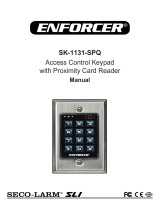 ENFORCER SK-1131-SPQ User manual
ENFORCER SK-1131-SPQ User manual
-
SECO-LARM SK-3133-PPQ Owner's manual
-
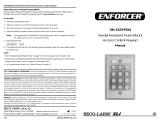 ENFORCER SK-1123-FDQ Installation guide
ENFORCER SK-1123-FDQ Installation guide
-
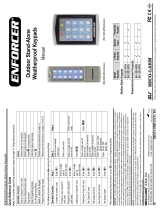 ENFORCER SK-2323-SPQ Installation guide
ENFORCER SK-2323-SPQ Installation guide
-
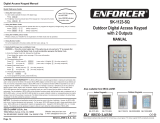 ENFORCER SK-1123-SQ Installation guide
ENFORCER SK-1123-SQ Installation guide
-
ENFORCER SK-B111-PQ Operating instructions
-
SECO-LARM SK-2612-SPQ Owner's manual
-
SECO-LARM SD-9773-KNEVQ User manual
-
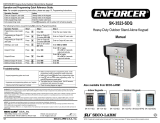 ENFORCER SK-3523-SDQ Installation guide
ENFORCER SK-3523-SDQ Installation guide
Other documents
-
SECO-LARM SK-1011-SDQ User manual
-
SECO-LARM SK-1011-SDQ Owner's manual
-
SECO-LARM SK-1131-SPQ Owner's manual
-
SECO-LARM SK-1123-FDQ Owner's manual
-
Transmitter dolkps1kb Owner's manual
-
Transmitter dolkpl1kb Owner's manual
-
SECO-LARM SK-4131-SPSQ Owner's manual
-
SECO-LARM PR-112S-A Owner's manual
-
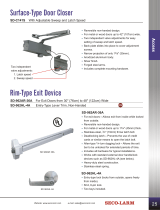 SECO-LARM USA Enforcer Access SD-962AR-36A User manual
SECO-LARM USA Enforcer Access SD-962AR-36A User manual
-
SECO-LARM Enforcer SK-1011-SQ User manual





































